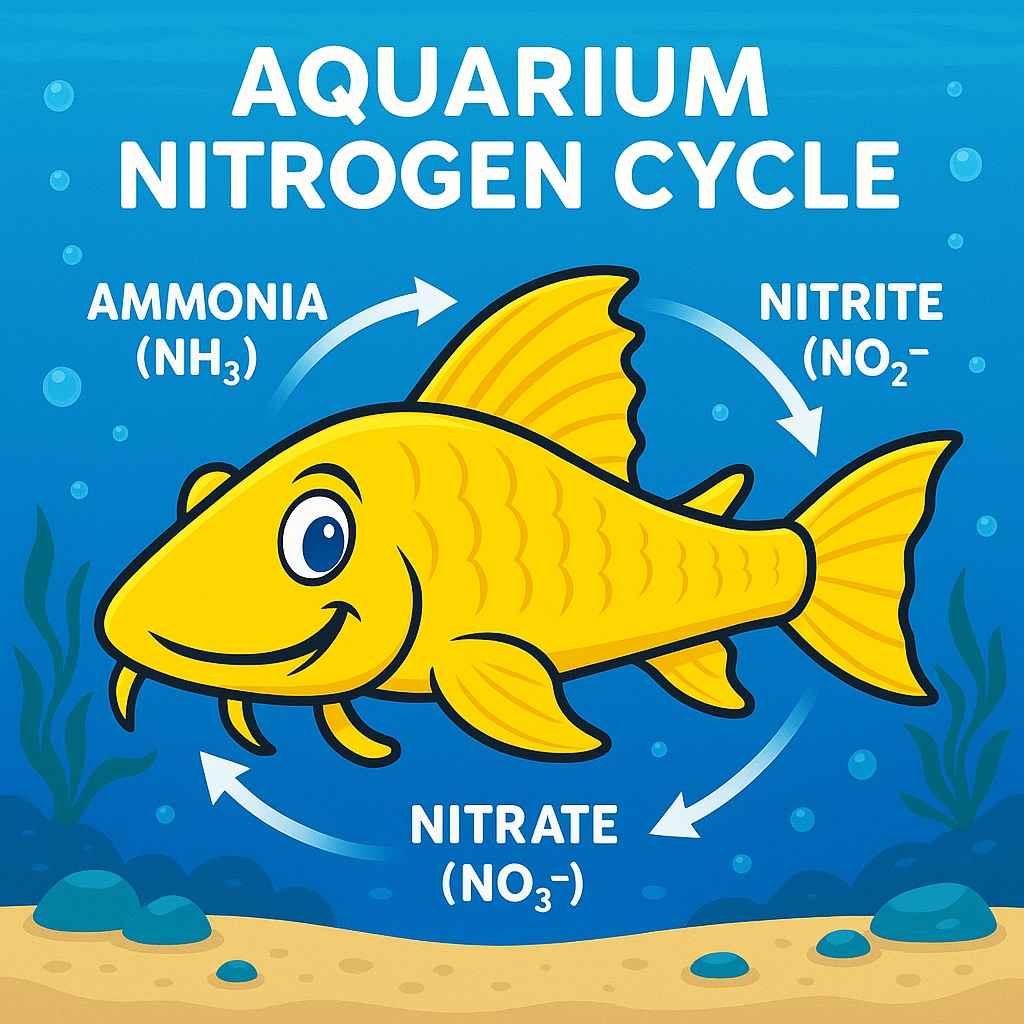Understanding the Nitrogen Cycle
🐟 Understanding the Aquarium Nitrogen Cycle
The aquarium nitrogen cycle is one of the most critical processes in fishkeeping. Without it, fish are exposed to dangerous toxins that can quickly lead to stress, illness, or death. Whether you’re setting up a new aquarium or maintaining an established one, understanding this cycle ensures a healthy and thriving aquatic environment.
🔄 Step 1: Ammonia Production
When fish eat and produce waste, or when uneaten food decays, ammonia (NH₃) is released into the water. Ammonia is highly toxic to fish, even in small amounts. Levels as low as 0.25 ppm can cause stress, gill damage, and reduced immunity.
🦠 Step 2: – Ammonia to Nitrite
As the cycle begins, beneficial Nitrosomonas bacteria colonize surfaces in your aquarium, such as gravel, plants, decorations, and filter media. These bacteria consume ammonia and convert it into nitrite (NO₂⁻). While nitrite is less toxic than ammonia, it can still harm fish by blocking oxygen transport in the blood.
🧬 Step 3: Nitrobacter Bacteria – Nitrite to Nitrate
Next, Nitrobacter bacteria convert nitrite into nitrate (NO₃⁻). Nitrate is much less harmful to fish but can be dangerous at high concentrations. Keeping nitrate levels low is essential for long-term fish health.
💧 Step 4: Nitrate Management
Nitrates can be reduced through regular water changes, live plants, and proper feeding habits. Most aquariums should keep nitrate levels under 40 ppm, with 20 ppm or lower being ideal for sensitive fish species.
⚡ Speeding Up the Nitrogen Cycle
The nitrogen cycle can take 4–8 weeks to fully establish in a new tank. To speed up the process:
- ✅ Use filter media, sponge, or gravel from an established aquarium to introduce beneficial bacteria instantly.
- ✅ Keep water dechlorinated, as chlorine kills beneficial bacteria.
- ✅ Maintain stable water temperature and oxygen levels for optimal bacterial growth.
🛡 Why the Nitrogen Cycle Matters
Skipping or rushing the nitrogen cycle can cause “New Tank Syndrome”, leading to sudden fish deaths. By cycling your aquarium properly, you create a balanced ecosystem where ammonia and nitrite remain at 0 ppm and nitrates are manageable.
